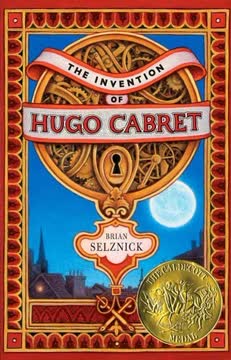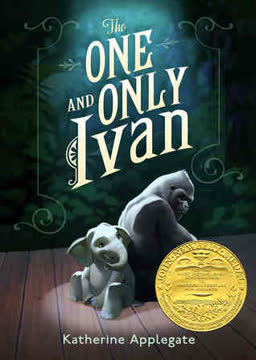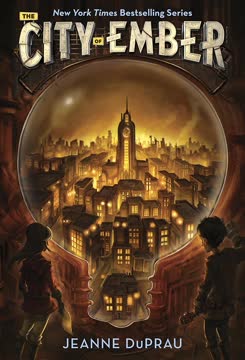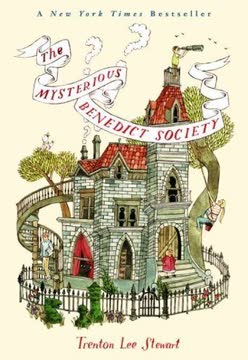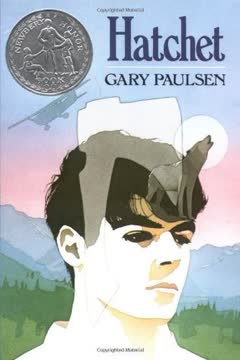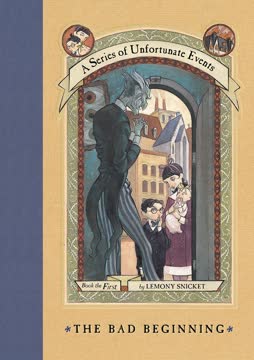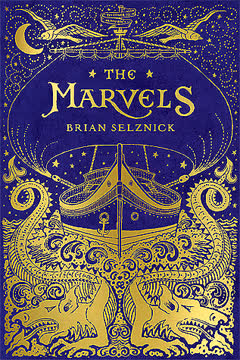Plot Summary
Clocks in the Walls
In the bustling Paris train station, young Hugo Cabret lives a hidden life behind the walls, tending to the clocks his vanished uncle once maintained. Orphaned and alone, Hugo's world is a maze of gears, shadows, and secrets. He survives by stealing food and parts, always wary of the station inspector. The rhythmic ticking of the clocks is both his comfort and his prison, marking the passage of time as he clings to the hope that his father's memory—and the mysterious automaton they tried to fix together—will somehow save him. Hugo's days are a delicate balance of invisibility and necessity, his every action driven by the need to remain unseen and to keep the clocks, and his fragile world, running.
The Orphan's Secret Life
Hugo's existence is a precarious dance between survival and discovery. He scrounges for food, evades the ever-watchful station inspector, and repairs the clocks to avoid suspicion. His only companion is the broken automaton, a mechanical man his father found in a museum. Hugo believes that if he can fix the automaton, it will deliver a message from his father, a final connection to the family he lost in a tragic fire. The automaton becomes both his obsession and his hope, a symbol of the life he desperately wants to reclaim. Every stolen gear and borrowed tool is a step toward unlocking the automaton's secret, and perhaps, his own future.
A Broken Automaton
The automaton, a delicate and intricate machine, is at the heart of Hugo's quest. With its lifeless eyes and missing parts, it represents both the mystery of his father's death and the possibility of redemption. Hugo's meticulous repairs are acts of love and desperation, each adjustment a silent conversation with his lost parent. The automaton's silence is haunting, its potential message tantalizingly out of reach. Hugo's determination to restore it is fueled by the belief that it will reveal something profound, a message that will give meaning to his suffering and perhaps guide him toward a new beginning.
The Toy Booth Encounter
Hugo's need for parts leads him to the toy booth run by the gruff Georges Méliès. When Hugo is caught stealing, Méliès confiscates his precious notebook, filled with sketches and instructions for repairing the automaton. The loss is devastating; the notebook is Hugo's last link to his father's genius and love. Méliès's anger is fierce, but beneath it lies a sadness that hints at his own hidden wounds. This encounter sets off a chain of events that will draw Hugo into the lives of Méliès and his goddaughter Isabelle, and ultimately unravel secrets that have been buried for decades.
The Notebook's Disappearance
The confiscation of the notebook plunges Hugo into despair. Without it, he fears he will never complete the automaton or discover his father's message. Hugo pleads with Méliès, but the old man is unmoved, haunted by memories he refuses to share. Isabelle, curious and kind, becomes Hugo's reluctant ally, drawn to the mystery of the boy in the walls and the secrets he guards. Together, they begin to unravel the threads that connect their lives, discovering that the past is never truly gone, and that every broken thing can be mended with patience and courage.
Isabelle's Hidden Key
Isabelle, clever and adventurous, is drawn to Hugo's plight. She discovers a heart-shaped key among her godfather's things, a key that matches the automaton's lock. The two children form a fragile partnership, united by curiosity and a longing for belonging. Their shared quest to repair the automaton becomes a journey of trust and discovery, as they navigate the dangers of the station and the mysteries of Méliès's past. The key is more than a tool; it is a symbol of hope, unlocking not just the automaton, but the possibility of healing old wounds and forging new connections.
The Old Man's Past
As Hugo and Isabelle dig deeper, they uncover clues about Méliès's former life. Once a celebrated filmmaker and magician, Méliès's world was shattered by war and loss, leaving him a bitter, forgotten man. The automaton, it turns out, was once part of his magical creations, a relic of a time when dreams seemed possible. Méliès's anger and sadness are rooted in the destruction of his art and the erasure of his legacy. Hugo's quest to fix the automaton becomes intertwined with the old man's need for redemption, as both struggle to reclaim what was lost.
Blueprints and Memories
Hugo and Isabelle discover blueprints and sketches that link the automaton to Méliès's films. The drawings are filled with fantastical images—rockets, moons, and stars—echoes of Méliès's cinematic masterpieces. These artifacts spark memories in Méliès, who begins to share stories of his past glory and the magic of early cinema. The children realize that the automaton is not just a machine, but a bridge between generations, carrying the dreams and sorrows of those who built it. The blueprints become a map, guiding them toward understanding and reconciliation.
The Heart of the Machine
With the heart-shaped key, Hugo and Isabelle finally wind the automaton. In a moment of breathless anticipation, the machine draws a picture—a scene from Méliès's most famous film, "A Trip to the Moon," complete with the iconic rocket in the moon's eye. The automaton's message is clear: it is a tribute to Méliès's lost artistry and a call to remember the magic of creation. For Hugo, the moment is both a triumph and a release, as the machine's movement brings closure to his father's memory and opens the door to a new chapter.
A Message from the Past
The automaton's picture is more than a technical marvel; it is a message from the past, connecting Hugo, Isabelle, and Méliès in a shared legacy. The drawing leads the children to a film historian, who helps them piece together Méliès's forgotten career. Through old films and interviews, they learn of his innovations and heartbreak, and the way his dreams were nearly erased by time and indifference. The automaton becomes a symbol of resilience, proof that even the most fragile creations can endure and inspire.
The Magic of Movies
The rediscovery of Méliès's films brings joy and wonder back into his life. Hugo and Isabelle watch in awe as the old movies flicker to life, their fantastical images reigniting the spark of imagination. The station, once a place of hiding and fear, becomes a theater of dreams, where the past and present merge in celebration. Méliès, once broken by loss, is restored by the recognition of his genius and the love of the children who believed in him. The magic of movies becomes a healing force, transforming sorrow into hope.
The Truth Revealed
With the help of the film historian, Méliès's true identity as a pioneer of cinema is revealed to the world. The automaton's drawing serves as evidence of his artistry, and the public's renewed interest brings him out of obscurity. Hugo, once an invisible orphan, becomes a hero in his own right, his perseverance and ingenuity recognized by those around him. The truth, long buried beneath layers of pain and secrecy, emerges into the light, allowing all involved to find peace and purpose.
The Station Inspector's Threat
As Hugo's world begins to open, the station inspector intensifies his pursuit. Determined to send Hugo to an orphanage, the inspector represents the ever-present threat of loss and separation. Hugo's fear of being caught is matched only by his determination to protect his new family and the fragile happiness they have found. The inspector's relentless chase adds urgency to Hugo's quest, forcing him to confront his deepest fears and fight for his place in the world.
Escape and Pursuit
In a tense and thrilling sequence, Hugo is pursued by the inspector through the labyrinthine station. The chase is a test of courage and resourcefulness, as Hugo uses his knowledge of the clocks and hidden passages to evade capture. The danger is real, but so is the support of his friends, who rally to his aid. The pursuit becomes a metaphor for Hugo's struggle to escape the shadows of his past and claim a future of his own making.
The Filmmaker's Redemption
With his films restored and his story told, Méliès is celebrated as a visionary artist. The public's embrace heals old wounds, and Méliès is able to forgive himself for the losses he endured. Hugo's role in this redemption is profound; by saving Méliès's legacy, he also saves himself. The bond between the boy and the old man is cemented, each finding in the other a reason to hope and believe in the power of dreams.
A Family Reimagined
Hugo, once alone and adrift, finds a new family in Méliès and Isabelle. Their shared experiences forge deep connections, transforming loneliness into belonging. The station, once a place of exile, becomes a home filled with laughter, creativity, and love. The characters' journeys intersect and intertwine, each finding healing in the presence of the others. The family they create is unconventional but real, built on trust, forgiveness, and the courage to dream again.
Dreams Restored
The story's resolution is one of renewal and possibility. Hugo, Isabelle, and Méliès each reclaim their dreams, inspired by the magic of invention and the resilience of the human spirit. The automaton, once broken and silent, becomes a symbol of hope, its restored movement echoing the characters' own journeys toward wholeness. The past is honored, but the future is embraced, as the characters step into a world filled with promise and wonder.
The Invention of Hope
In the end, Hugo's journey is not just about fixing a machine, but about inventing a life worth living. Through courage, friendship, and the power of imagination, he transforms loss into possibility and sorrow into joy. The invention of Hugo Cabret is, ultimately, the invention of hope—a testament to the enduring power of dreams and the magic that lies within every broken thing, waiting to be made whole.
Characters
Hugo Cabret
Hugo is a resourceful and determined boy, orphaned by tragedy and forced to survive alone in the Paris train station. His life is defined by secrecy, loss, and a relentless drive to repair the automaton left by his father. Hugo's intelligence and mechanical skill are matched by his vulnerability and longing for family. His journey is one of self-discovery, as he moves from isolation to belonging, finding purpose in helping others and restoring lost dreams. Hugo's relationships with Isabelle and Méliès are transformative, allowing him to heal and embrace hope. His character embodies resilience, creativity, and the universal desire for connection.
Georges Méliès
Méliès is a complex figure, once a celebrated illusionist and pioneer of early cinema, now reduced to running a toy booth and hiding from his past. Haunted by loss and the destruction of his art, he is initially bitter and withdrawn. Méliès's encounter with Hugo and Isabelle rekindles his passion and restores his sense of purpose. Through their efforts, he confronts his pain and reclaims his legacy, finding redemption and peace. Méliès's journey mirrors Hugo's, as both seek to mend what has been broken and rediscover the magic of creation.
Isabelle
Isabelle is Méliès's goddaughter, a spirited and intelligent girl who longs for adventure and connection. Her friendship with Hugo is transformative, drawing her into a world of secrets and discovery. Isabelle's courage and empathy are crucial to unraveling the mysteries of the automaton and Méliès's past. She is both a partner and a catalyst, helping Hugo find his place in the world while forging her own identity. Isabelle's journey is one of empowerment, as she learns to trust herself and embrace the possibilities of the future.
The Station Inspector
The station inspector is a menacing presence, obsessed with order and determined to capture Hugo. His pursuit is driven by a rigid sense of duty, but also by his own insecurities and longing for control. The inspector's character represents the dangers of authority unchecked by compassion, and the ever-present threat of loss that haunts Hugo's life. Despite his antagonism, the inspector is not without depth, his actions shaped by fear and loneliness.
Hugo's Father
Though deceased, Hugo's father is a powerful presence in the story, his memory guiding Hugo's actions and dreams. A clockmaker and lover of invention, he instilled in Hugo a passion for mechanics and a belief in the magic of creation. His tragic death leaves Hugo adrift, but his legacy endures in the automaton and the hope it represents. The father's influence is a source of strength and motivation, shaping Hugo's journey toward healing and self-discovery.
Mama Jeanne
Mama Jeanne is Méliès's wife and Isabelle's guardian, a gentle and caring figure who provides stability and warmth. Her love and patience are essential to Méliès's recovery and the formation of the new family. Mama Jeanne's quiet strength and kindness offer a counterbalance to the story's darker elements, embodying the healing power of compassion and forgiveness.
Etienne
Etienne is a minor but important character, a friend of Isabelle's who shares her love of movies. His enthusiasm and knowledge help Hugo and Isabelle uncover the truth about Méliès's past. Etienne represents the joy of discovery and the importance of friendship in overcoming adversity.
The Bookseller
The bookseller is a wise and helpful figure, providing Hugo and Isabelle with information about Méliès and the history of cinema. His role is that of a guide, helping the children navigate the complexities of the past and find the answers they seek.
The Film Historian
The film historian is instrumental in bringing Méliès's story to light, recognizing the significance of the automaton's drawing and helping to restore Méliès's reputation. His dedication to preserving history is crucial to the story's resolution, ensuring that the magic of the past is not forgotten.
Uncle Claude
Uncle Claude is Hugo's unreliable and alcoholic uncle, whose disappearance forces Hugo to fend for himself. Though largely absent, his neglect sets the stage for Hugo's journey, pushing the boy toward self-reliance and discovery.
Plot Devices
The Automaton
The automaton is the central plot device, representing the intersection of past and present, loss and redemption. Its restoration drives the narrative, linking Hugo's quest to his father's memory and Méliès's lost artistry. The automaton's eventual activation is a moment of revelation, delivering a message that unites the characters and resolves their emotional arcs. As both a literal machine and a metaphor for healing, the automaton embodies the story's themes of invention, resilience, and the enduring power of dreams.
The Notebook
Hugo's notebook, filled with sketches and instructions, is a tangible link to his father and a symbol of hope. Its loss and recovery mirror Hugo's emotional journey, representing the fragility of memory and the importance of perseverance. The notebook's contents guide Hugo's actions and provide the key to unlocking the automaton's secrets.
Hidden Identity
The revelation of Méliès's true identity as a pioneering filmmaker is a pivotal plot device, transforming the lives of all involved. The gradual uncovering of secrets—through blueprints, films, and personal stories—creates suspense and emotional depth, allowing the characters to confront their pasts and embrace new possibilities.
The Train Station
The Paris train station is more than a backdrop; it is a living, breathing character in its own right. Its labyrinthine passages and hidden spaces mirror Hugo's internal struggles, while its constant movement symbolizes the possibility of change and renewal. The station is a place of both danger and discovery, shaping the characters' journeys and the story's emotional landscape.
Analysis
Brian Selznick's "The Invention of Hugo Cabret" is a luminous meditation on loss, resilience, and the redemptive power of art. Through the intertwining stories of a lonely boy, a forgotten filmmaker, and a magical automaton, the novel explores how broken things—and broken people—can be made whole through creativity, courage, and connection. The book celebrates the wonder of early cinema, the importance of preserving history, and the transformative potential of friendship. Selznick's narrative structure, blending text and illustration, mirrors the magic of movies, inviting readers to experience the story as both a visual and emotional journey. At its heart, the novel is a testament to hope: the belief that even in the darkest places, invention and imagination can light the way forward, and that every life, no matter how hidden or damaged, has the potential to inspire and heal.
Last updated:
Review Summary
The Invention of Hugo Cabret is a beloved children's book that combines illustrations and text to tell a magical story set in 1930s Paris. Readers praise the unique format, intricate drawings, and engaging plot about an orphan boy who lives in a train station. Many found the book captivating and moving, appreciating its blend of history, cinema, and imagination. While some felt the story lacked depth, most reviewers were enchanted by the innovative storytelling and beautiful artwork, recommending it for both children and adults.
Similar Books
Download PDF
Download EPUB
.epub digital book format is ideal for reading ebooks on phones, tablets, and e-readers.
